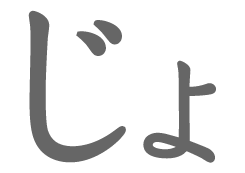

Type as you usually would on your normal (English) keyboard. To type in Japanese, select Japanese input on your computer. Whether you’re taking notes, writing to a pen pal, or tweeting about how much you love FluentU, type it in Japanese! One way that I learned hiragana and katakana so easily was by typing in Japanese whenever I had the opportunity.
#Hiragana megane mac
Then, ensure that you can read and write in Japanese on your computer:įor Mac Users: CosCom Tutorial Type in Japanese You can find a number of great charts with a simple internet search. The next thing you might want to do is have a hiragana and katakana chart at hand for reference. Luckily there are a few easy ways to learn these scripts. If you’re like me, you’d much rather be on Facebook, watching anime, or doing anything but studying hiragana and katakana. Many sound words (like sound effects in manga or animal noises) are also written in katakana. *American football can also be called アメフト.īecause these words aren’t native to Japan, they’re written in katakana. The small circle in between the previous names separates a first name from a last name (or separates two names) so Japanese readers can tell where a foreign name begins and ends. Every katakana character has a hiragana counterpart that makes the same sound. Katakana characters take a boxier form than hiragana characters do, and appear simpler than kanji. Japan’s fun and quirky onomatopoeia appears in both katakana and hiragana.

Foreign names are represented in katakana, as are many foreign foods. While katakana (カタカナ) represents the same sounds as hiragana, it’s mainly used to represent foreign words. There are some cases where Japanese words use hiragana more often than kanji, such as かわいい (kawaii) or さようなら (sayounara). Hiragana characters are easy to identify because they’re usually a bit curvy and look simpler than kanji characters. Participles, expressions, and words with extremely difficult or rare kanji are mostly written in hiragana. In Japanese the suffix “-ing” would be written in hiragana. Remember the symbol ♥ ? If you wrote “♥ing” it’d be read as “loving”. Hiragana (ひらがな) is used mainly for grammatical purposes. Hiragana and katakana use the same sounds, but different characters. Together, こんにちは reads as “konnichiwa”! Easy, right? You can use hiragana to read the sound of a kanji character. This means that こ makes the “ko” sound, ん makes the “n” sound, に makes the “ni” sound, ち is “chi”, and “は” in this situation is pronounced as “wa”. Don’t let this number overwhelm you! If you think about it, between capital and lowercase letters, cursive and print, English has 104 different letter appearances in its alphabet!Īll hiragana and katakana characters make phonetic sounds, just like the English alphabet. We’ll be focusing on hiragana and katakana (often referred to as kana) in this article - and for a very good reason! Hiragana and katakana consist of a little less than 50 characters each. However, today we’ll learn about reading Japanese without kanji. The more kanji you learn, the easier reading Japanese becomes.

Do you understand “I♥you”? How about, “You’reA★”? These symbols act just like kanji does. Think of ♥ as a kanji character that represents “love”. There are no spaces in Japanese, so kanji helps distinguish when a new word begins. Kanji characters are symbols that represents words. Most Japanese words (nouns, adjectives and verbs) are written in kanji. Kanji (漢字) are adopted Chinese characters used in modern Japanese writing. (Download) Three Japanese Alphabetsįirst things first, Japanese uses three main scripts (or alphabets): hiragana, katakana and kanji.

#Hiragana megane pdf
This blog post is available as a convenient and portable PDF that youĬlick here to get a copy. Once you get into it, you might even start itching for Japanese subtitles instead of English when you watch your Japanese dramas! With these recommended methods and resources,you can learn to write, type and read the Japanese kana. When you start your Japanese learning journey, the first thing that is often recommended by textbooks and teachers is to learn hiragana and katakana, collectively called the “kana.” DecemThe Ultimate Guide to Learning Hiragana and Katakana


 0 kommentar(er)
0 kommentar(er)
